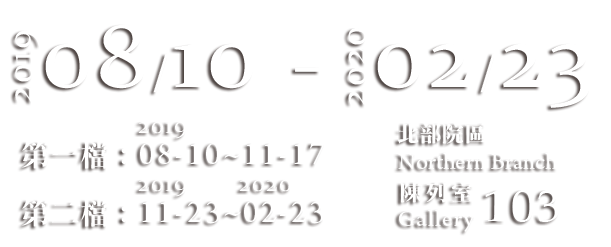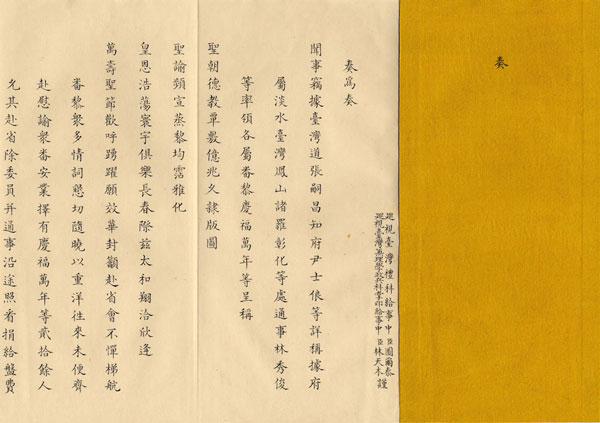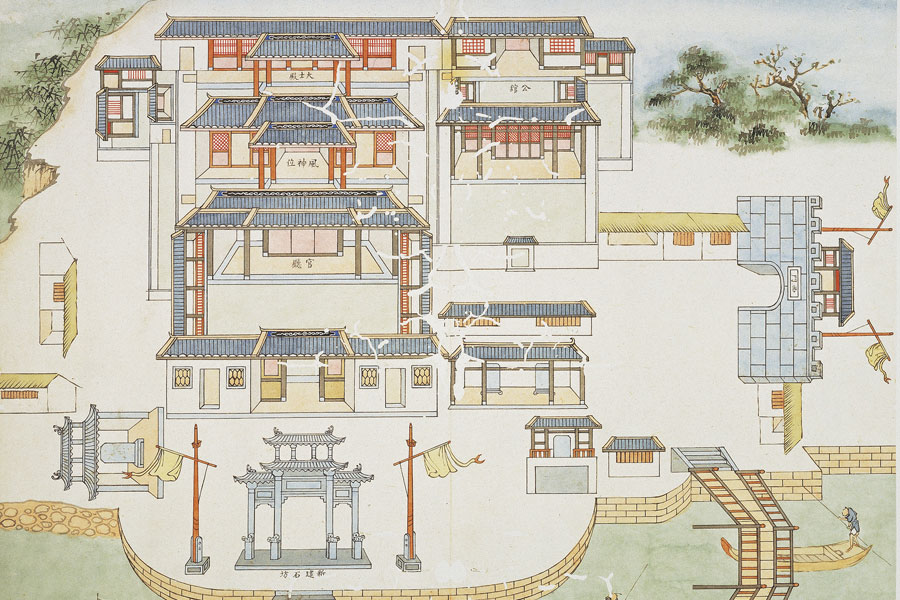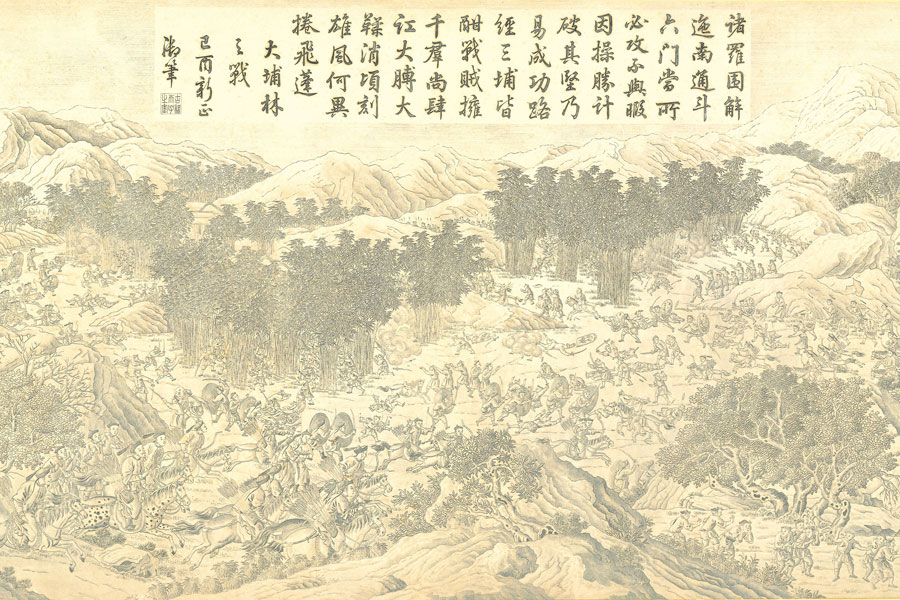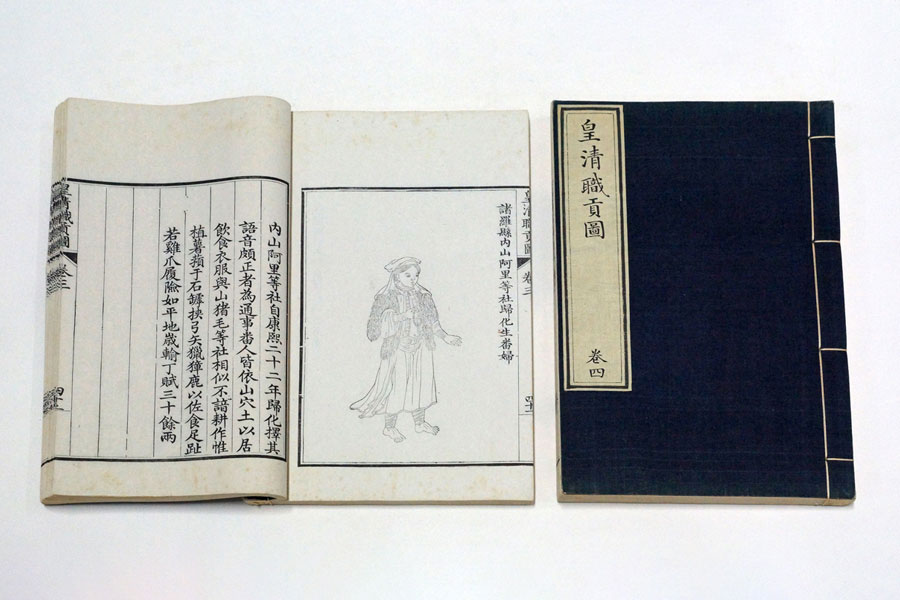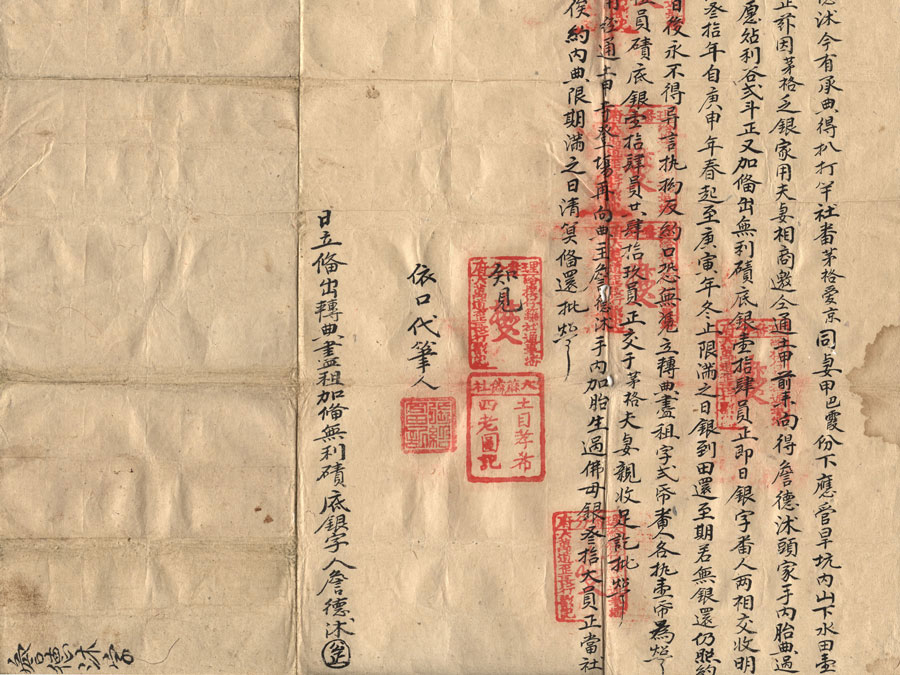Of the National Palace Museum's collection of Qing dynasty archives there is a wealth of materials relating to the indigenous peoples of Taiwan, including gazetteers, illustrations, and land deeds, all of which offer valuable first-hand information on Taiwanese aboriginal history and culture over the past three hundred years. These include memorials submitted to the emperor by officials of various levels and gazetteers compiled by the court, which contain detailed accounts of indigenous rites and customs, local produce, clothing and food, governance, education, religious beliefs, and conflicts and wars. Maps and illustrations are rich in vivid portrayals of the environment and living conditions, while contracts and deeds drawn up between individuals provide a glimpse into the settlement of Han Chinese immigrants in Taiwan and their interaction with Taiwanese indigenous peoples. This section of the exhibition showcases the finest items of the Museum's collection of historical materials relating to Taiwanese indigenous peoples. Visitors are invited to keep an open mind while they examine these materials of relevance to both the past and the present and get to know Taiwan's unique history and culture.
Die Insel Formosa Neu Abgemessen aus Besehl Kayfers Kamhi
(The Island Formosa, Newly Measured on the Order of Emperor Kamhi)
- Drawn by Joseph Stoecklein 1715
- Donated by Prof. Johannes Hajime Iizuka
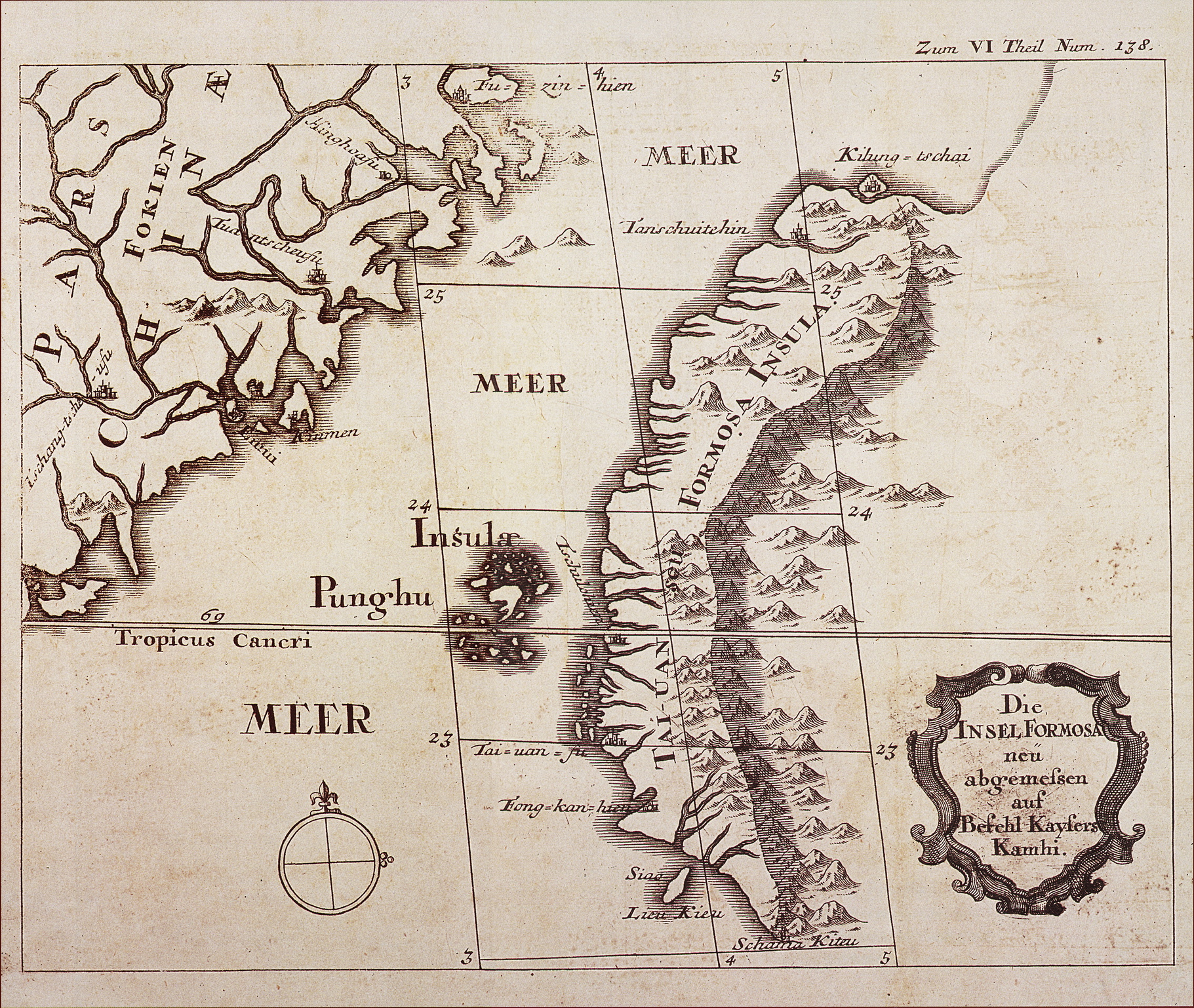
Palace memorial on the presentation of birthday greetings by Taiwanese aborigines to the emperor
- 2nd day of the 10th month of the 12th year of the Yongzheng reign (Oct. 28, 1734), Qing dynasty
Jointly presented by Tuertai, Supervising Censor of the Board of Rites for Inspection of Taiwan, and Lin Tianmu, Supervising Censor of the Board of War and Education Commissioner for Inspection of Taiwan. National Palace Museum cultivated richly in Taiwan. Museum collected all levels of memorials from civil and military officials from Qing Dynasty Central and Fujian, Taiwan,the collection is abundant. It contents local customs from different places of Taiwan during Qing Dynasty, interaction between Chinese and aborigines, cultural and educational beliefs, conflict competition, forest products, environmental changes… and so on. It's precious and important first-hand literature to understand Taiwan history and culture over the past three hundred years.
Chongxiu Taijun Gejianzhu Tushuo (Illustrations and Discourses on the Restoration of Official Buildings in the Prefecture of Taiwan)
- Qianlong reign (1736-1795), Qing Dynasty
- Album leaf, colours on paper
Taiwan prefect – Jiang Yuan-Shu submitted paper color painting in Qing Emperor Qianlong forty-three years (1778). It presented pictures thirty nine pieces, description of figures has forty pieces (One of them named "Remember", balance all named "Ddescription of figures". Jiang Yuan-Shu (1739-1781), also named Zhong-Sheng, Jiangsu Changshu people. He became fist–degree scholar in Qianlong twenty-four years(1759), served as Taiwan prefect during Qianlong forty year (1775) April to forty-three year May and also to be Prefecture Command for patrol of Taiwan. He promoted infrastructure vigorously, included to repair the city, built temples, increase the arrogance, built government office, equipped rituals… and so on, successful performance. (Rebuild the architectural plans of Taiwan) is a testimony of achievement in his official career and the appearance of Taiwan's political and economic circles during the Qianlong period also followed.
Pingding Taiwan Tu (Illustrations of the Pacification of Taiwan)
- Copperplate print, Qianlong reign (1736-1795), Qing dynasty
Copperplate painting from Europe, the first, craftsmen used carving knife directly engraved on the metal objects to engrave patterns and gradually developed the intaglio art of copperplate painting. Qing Dynasty, Kangxi, Yongzheng, Qianlong three dynasties had campaign in the northwest and finally subdued in Qianlong twenty five year (1760). To recognize this mentorious service, Emperor Qianlong ordered the missionaries to draw the painting about the war in Hui & Sinjang. Those paintings were sent to French in batches to make the copperplate painting and finished in Qianlong thirty-eight (1773). That is the first set of copperplate painting – (Painting of subdued Hui & Sinjang. The Chinese courtiers continued to produce all kinds of copperplate painting about war after that. After end of the event Lin Shuangwen, in order to demonstrate the exploits, Emperor Qianlong ordered the palace painter Miao Bingtai, Yao Wenhan, Xie Sui….and so on sevent people to draw color pictures and make a series of copperplate painting, total twelve pieces. Those paintings combined the techniques of traditional Chinese painting and Western painting. It tells the theme of fighting by panoramic view of the subject. It also matched with wooden brush painted inscribed poem of the Emperor Qianlong, both pictures and texts are excellent. To exhibited six of them, it shown the part of the event style.
Huangqing Zhigong Tu (Illustrations of Tribute Missions to the Imperial Qing)
- Compiled on imperial order by Fu Heng, et al., Qing dynasty
- Wuying Palace edition, 10th year of the Jiaqing reign (1805), Qing dynasty
Aboriginal people have unique language, skills, clothing and social organization, value of faith. Part of connotation and continues to this day. It's the most pristine, the most mellow indicators of culture in the diversity of Taiwan society. There are many kinds of Taiwan aboriginal images drawn during Qing Dynasty. Although part of them are legent or imagination, it still could reflect the image contours and characteristics of their daily costumes, appearance, utensils. It contains many precious records of Aboriginal activities on memorials, articles of all levels of civil and military officers in Fujian, Taiwan and Central of Qing Dynasty. It reflected the official understand of process and contact experience to the Taiwan aborigines.
No-interest mortgage loan agreement for the Han Chinese lender Zhan Demu
- 2nd month of the 10th year of the Xianfeng reign ( Feburary-March, 1860), Qing Dynasty
- Donated by the Zhan family of Tungshih, Taichung
The folk contract (old written receipt) is a pass through document among traditional Chinese people. It acts as a certification of identity, property and land and building rights transfer. When Chinese people migrated to Taiwan from Fujian and Guangdong, the contract is main document to certificate the transfer of property right. Those documents become the most important historical material to testimony the relationship between Chinese people and Taiwan aborigines.
